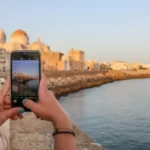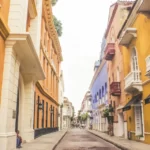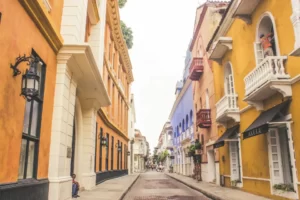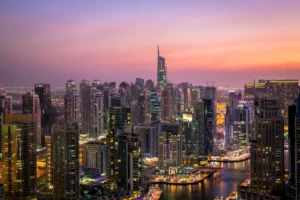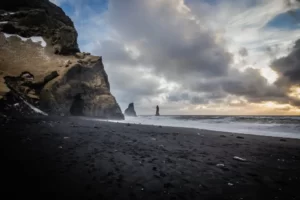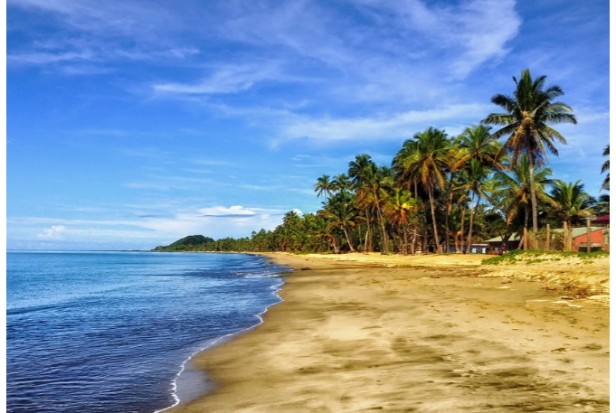
You can find information about visiting Fiji in the dry vs. wet season, activities to add to your itinerary, and how to make your dream A vacation to Fiji becomes a reality.
From June through September, which is regarded as the on or peak season, is the most popular time to travel to Fiji. During this time, a large influx of foreign tourists visit the Fijian islands because it is the dry season.
When is the Best Time to Visit Fiji?
There are two distinct seasons in Fiji: the dry season and the wet season. All year long, Fiji has a thriving tourism industry. However, if you want to make the most of your time traveling between its islands, there are some seasons that are better to visit than others.
Travel to Fiji is recommended during the dry season. May through September are the drier months. It feels like paradise during these months thanks to the ideal weather of clear, sunny skies, warm temperatures, and little rainfall.
In Fiji, the dry season lasts from fall through winter. Visit during the fall shoulder seasons, when there are fewer tourists, if you’re looking for a more relaxed travel experience to indulge in “Fiji Time.” However, since the climate is still changing, there may still be days with heavy rain or high humidity. Winter is the best time to travel if you don’t mind the crowds and would rather enjoy the best Fijian weather.
The wet season may be when visitors to Fiji prefer to go. The likelihood of rainstorms, which happen every day but are brief, is the only drawback to the wet season. Despite being a wet season, spring has a lot of well-known festivals.
When is the Worst Time to Visit Fiji?
Most people imagine Fiji as an idyllic island with perfect weather, blue skies, and days spent lazing on the beach or engaging in cultural activities with the local Melanesian peoples. Despite sounding like a paradise, Fiji isn’t this way all year round. Many people choose not to visit the island during certain seasons of the year because of the shifting weather patterns that may impact your travel plans.
The rainy season, which lasts from October to April, is not the best time to visit Fiji. Every day during the afternoon during the wet season, it usually rains heavily. Because of the rain, popular activities like snorkeling require less visibility in the water. Fiji is occasionally hit by cyclones, but they are uncommon. Given that there is a higher chance of cyclones hitting the island in December than any other, Fiji is the worst month to travel there.
Some tourists favor visiting Fiji in the wet season because the rainstorms are brief. For visitors hoping to avoid large crowds at the resorts or on the beaches, Fiji’s busiest travel period during the dry winter can be unfavorable.
Where to Go in Fiji
You will have a great time on any of the Fijian islands, but these are some of the most well-liked places to visit while you are there.
Viti Levu
Flyers arriving in Fiji will touch down at Nadi Airport on Viti Levu, the largest island in the country. The main island’s attractions, such as Navala Village, Suva, the capital of Fiji, or even rafting down the Navua River, should be visited before rushing off to take advantage of the many delights the smaller islands have to offer.
Vanua Levu
Despite being one of the bigger islands in Fiji, Vanua Levu is not nearly as populated as Viti Levu. Go to one of the obscure villages or immerse yourself in the verdant rainforests to try and spot some of the unusual birds, reptiles, and mammals that call the forests their home if you’re a traveler seeking an escape to Fiji’s more rural side.
Mamanuca Islands
The Mamanuca islands are the best places to snorkel in Fiji, if that’s something you’re interested in. The Mamanuca Islands, made famous by the movies Cast Away and Survivour: Fiji, perfectly capture the ideal Fijian beach with their turquoise waters and undeveloped white sandy beaches.
Yasawa Islands
The Mamanuca islands are the best places to snorkel in Fiji, if you’re wondering where to go. The Mamanuca islands, made famous by the movies Cast Away and Survivour: Fiji, perfectly capture the ideal Fijian beach with their turquoise waters and undeveloped white sandy beaches.
Denarau Island
Denarau Island, known as the “island of luxury,” is actually connected to the main island by a causeway, making it very convenient for visitors arriving by plane. The best places to go for gorgeous swimming holes, shopping outings, and mouthwatering culinary adventures are on Denarau Island.
Diving Seasons in Fiji
The coral reefs in Fiji are among the world’s most colorful and breathtaking. Thousands of species of marine life and hundreds of different types of coral reside on the reefs that surround the Fijian islands. There are many ways to discover these stunning reefs, from scuba diving for a close-up view to snorkeling with green sea turtles and enormous manta rays. If you’re hoping to see some of these stunning marine creatures, May through October are the best months to go diving in Fiji.
Do I Need a Visa for Fiji?
Here are some crucial things you should be aware of before leaving on your trip to Fiji.
Australians looking to travel to Fiji do not require a travel visa for stays up to 4 months. There are additional prerequisites for entering Fiji. Travellers must have a Passport that is valid for 6 months from the date of arrival, have return or outbound tickets and have confirmation of accommodation for the duration of their visit.
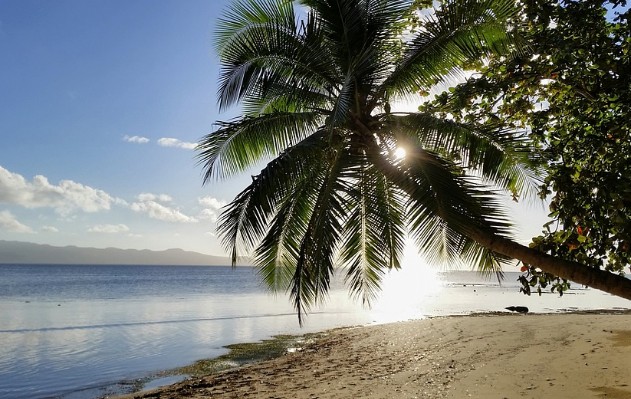
Health Risks in Fiji
Dengue Fever
Dengue fever is contracted through mosquito bites, so there are no vaccines to prevent it. Fever, sore muscles and joints, nausea, vomiting, and headaches are some symptoms.
Hepatitis A
Fever, nauseousness, vomiting, and abdominal pain are symptoms. The liver may be harmed in extreme circumstances.
Typhoid
There are several symptoms, including fever, muscle aches, nausea, abdominal pain, and diarrhea.
What Vaccinations Do I Need for Fiji?
Important
Before departing on your trip, vaccinations must be received. Try to get your shots 4–8 weeks before your trip.
High Priority: Tetanus Diphteria Vaccine
every ten years, it must be done. defends against tetanus, which develops when bacteria enter a wound and release a neurotoxin that causes muscle rigidity and excruciating spasms.
High Priority: Typhoid Vaccine
prevents the transmission of salmonella, which causes typhoid fever when contaminated food or water is consumed.
High Priority: Hepatitis a Vaccine
defends against Hepatitis A, an infection of the liver brought on by consuming contaminated food or water or coming into contact with infected individuals.
High Priority: Hepatitis B Vaccine
defends against Hepatitis B, a liver infection that is spread by contact with infected bodily fluids.
Visiting Fiji in the Spring
In the southern hemisphere, spring occurs from October to December. The wet season is during these months in Fiji. The daily rain showers that cover the islands are these months’ most pronounced feature. Even so, it can still be a fantastic time to travel and take in one of the most joyous seasons of the year.
Visitors can anticipate higher temperatures and longer days as spring arrives after the colder winter months. Average springtime highs and lows are usually in the low to mid 80s.
In Fiji, the wet season brings about daily afternoon downpours. Usually, these showers only last for an hour before the days become as sunny as usual. Consider the brief change in weather if you have any daytime activities scheduled. Plan changes won’t be too significant, though, usually!
The spring season is when Fijian tourism starts to wane. The peak season lasts from mid-October on. It’s a great time to take part in the many national festivities and experience true “Fiji Time.” Events like the Diwali Festival of Lights and Fiji Day in October, or the month-long holiday and New Year’s celebrations in December, are frequently held in the spring.
Visiting Fiji in the Summer
In Fiji, summer occurs in the middle of the rainy season. The most rain falls during the spring months of January through March. Cyclones are more likely to occur as a result of these powerful tropical storms, even though they are rare.
The summers in Fiji are among the hottest and wettest of the year. Daytime highs can exceed 90 °F, while overnight lows stay in the 80s. In Fiji, January is the warmest month. Days can feel even warmer because of the significant rise in humidity caused by the daily rain showers.
The low travel season is during the summer because most people choose to travel during other seasons with more favourable weather. There are several advantages if you travel during these months. With more than 13 hours of daylight each day, summer has the longest days of the year. It’s also a great time to visit Fiji’s numerous waterfalls to witness them flowing at their fullest.
Numerous local religious Hindu festivals take place at the end of the year, most notably the Holi Festival, which is known for its vibrant colors.
Visiting Fiji in the Fall
Fall is one of the transitional seasons in Fiji, where the hot, rainy summer gives way to the cool, dry winter. Some of the best times to travel to Fiji are during these shoulder months of April to June. While avoiding the tourist crowds that arrive in the later months, you’ll gain from the weather changing to more favourable conditions.
The weather will start to drastically change in April as the wet season comes to an end. In March, when the mercury drops below 90 degrees, the daily rainstorms start to subside. But if you go in April early in the month, you might still experience winter-like weather.
One of the best months to travel to Fiji is May. It happens just before the peak season and has weather similar to the summertime on the islands. The busiest travel period begins in June, at the tail end of the fall.
Consider visiting Fiji in the fall if you want to engage in outdoor activities. With an average of 10–11 hours of daylight each day, there is plenty of time to spend outdoors. The International Jazz and Blues Festival in May and the World Music Festival in June are both popular times for music festivals.
Visiting Fiji in the Winter
Contrary to popular belief, winter in Fiji is quite different. It is the most well-liked season to travel to this island chain because it is the time of year when the weather is at its best. Winter in Fiji lasts from July to September because the country is in the southern hemisphere.
Fiji’s busiest time of year is in the winter, when the majority of its foreign tourists arrive. For many Australians and New Zealanders, as well as many other foreign tourists, it falls during the holiday travel season.
During the Fiji winter, the dry season is in full swing. Clear skies, pleasant mid-80s daytime temperatures, and low 60s at night are what you can anticipate. It also receives little rainfall and has low humidity. Due to the weather, it’s the perfect time to engage in outdoor pursuits like hiking, snorkeling, or daytime excursions without the worry of a midday downpour. Along with the Fiji Regatta Week in September, which takes place every year in July or August, there are other summertime attractions to enjoy.
Fiji experienced high winter tourism due to its ideal tropical climate. Bookings for its resorts, tours, private islands, and other activities are common. We help our Marchay Members get ready for their trip so they can make sure their schedules are full of the experiences they’re looking for.
Final Words
Winter can be crowded with travelers, even though it is the busiest travel season, as they swarm to the island to enjoy the most picturesque season. May, which is the beginning of the dry season but just before the big crowds arrive, is the best month overall to visit Fiji. With it, you can enjoy the island’s peace and tranquility as well as its wonderful weather.
Fiji Travelling FAQ
What is the Cheapest Time to Go to Fiji?
February is the cheapest month to visit based on the typical cost over the previous five years for both lodging and flights to Fiji.
When is Fiji Cyclone Season?
The risk of cyclones is greatest in the wet season, which lasts from November through April in the Fijian islands.
Is Fiji Expensive?
The cost of your flight and lodging in Fiji may change depending on the season you travel there. Try to schedule your vacation during the rainy season, which runs from October through April, to avoid the more expensive months.
How Many Days Do You Need in Fiji?
Travelers from all over the world flock to Fiji, which is a well-liked vacation spot. Nadi, the largest island, is where many tourists start their journey, but there are more than 300 other islands to discover. You might need to travel between islands while you’re in Fiji, which could require a quick boat ride or even an airplane trip, depending on what you want to do there.


